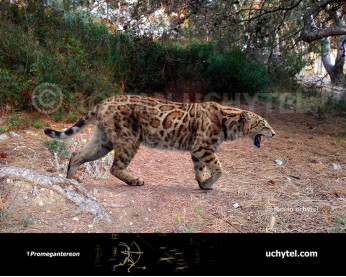Machairodus horribilis
236236Machairodus horribilis (Schlosser, 1903)
Order: Carnivore.
Family: Felidae
Subfamily: Machairodontinae
Tribe: †Machairodontini
Size: 2 m in length, 125 cm in height, 405 kg of weight.
Time period: Late Miocene of Europe, Asia and Africa (11.6 million to 5.3 million years ago)
Machairodus horribilis belonged to the genus Machairodus of large machairodontine saber-toothed cats that lived in Europe, Asia and Africa. According to the size of the skull, M. horribilis is estimated to have had a body weight of about 405 kg as a living animal. M. horribilis from Longjiagou has the largest skull of any sabertooth cat, but it likely did not exhibit the predatory behavior of derived taxa such as Smilodon or Homotherium, and instead hunted comparatively smaller preys. Derived predatory behaviors apparently have evolved several times independently in sabertooth cats along with changes of habitats and preys through the whole evolutionary history of sabertooth cats (Antón, 2013), as has clearly occurred in some ungulates, especially tooth crown changes in the family Equidae (Mihlbachler et al., 2011). The mixture of primitive and derived morphological characteristics in the cranium of M. horribilis is consistent with previously observed mosaic evolutionary patterns in early machairodontines, and additionally provides evidence that gigantism may be one of several mechanisms to increase gape prior to the evolution of the full suite of anatomical features associated with more efficient killing bite mechanism
Certain aspects of the skull shape were more like the skulls of modern lions and leopards, suggesting that M. horribilis may have had a range of motion in its jaw similar to large cats alive today.
Machairodus horribilis (Schlosser, 1903)
Order: Carnivore.
Family: Felidae
Subfamily: Machairodontinae
Tribe: †Machairodontini
Size: 2 m in length, 125 cm in height, 405 kg of weight.
Time period: Late Miocene of Europe, Asia and Africa (11.6 million to 5.3 million years ago)
Machairodus horribilis belonged to the genus Machairodus of large machairodontine saber-toothed cats that lived in Europe, Asia and Africa. According to the size of the skull, M. horribilis is estimated to have had a body weight of about 405 kg as a living animal. M. horribilis from Longjiagou has the largest skull of any sabertooth cat, but it likely did not exhibit the predatory behavior of derived taxa such as Smilodon or Homotherium, and instead hunted comparatively smaller preys. Derived predatory behaviors apparently have evolved several times independently in sabertooth cats along with changes of habitats and preys through the whole evolutionary history of sabertooth cats (Antón, 2013), as has clearly occurred in some ungulates, especially tooth crown changes in the family Equidae (Mihlbachler et al., 2011). The mixture of primitive and derived morphological characteristics in the cranium of M. horribilis is consistent with previously observed mosaic evolutionary patterns in early machairodontines, and additionally provides evidence that gigantism may be one of several mechanisms to increase gape prior to the evolution of the full suite of anatomical features associated with more efficient killing bite mechanism
Certain aspects of the skull shape were more like the skulls of modern lions and leopards, suggesting that M. horribilis may have had a range of motion in its jaw similar to large cats alive today.

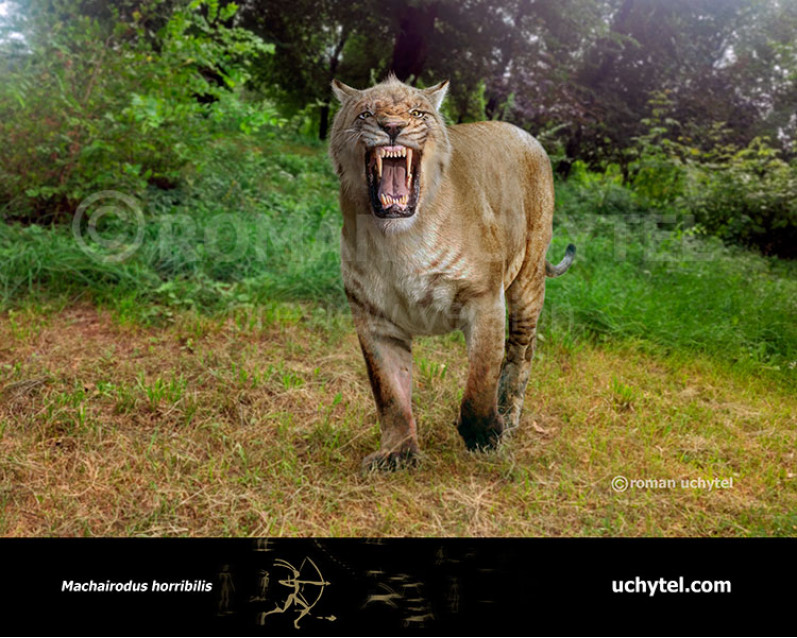
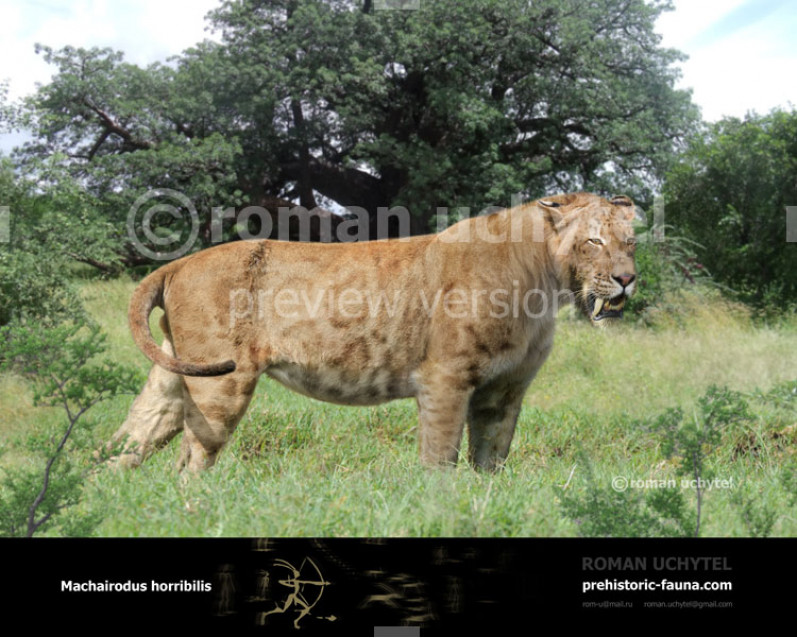
-797x638.jpg)


-70x56.jpg)
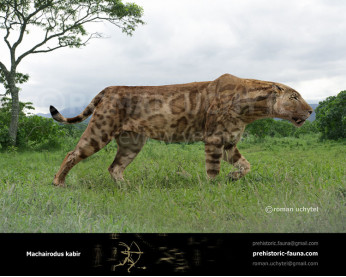
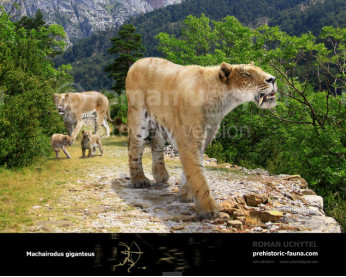
-346x277.jpg)
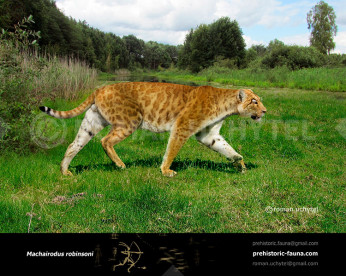
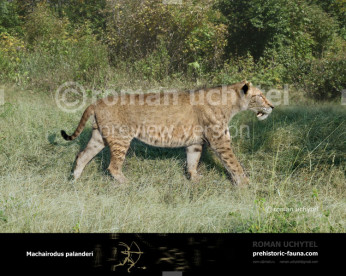
-346x277.jpg)
